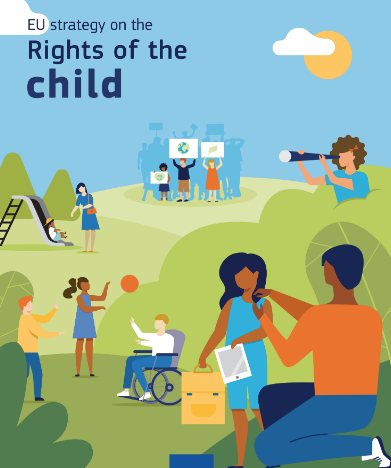EU Child Rights Strategy calls for prohibition of all corporal punishment of children
As Europe grapples with the impact of conflict, associated migration, increased digitalisation and the aftermath of the COVID-19 pandemic, children face a critical moment. Millions are at heightened risk of violence — be it trafficking, physical violence, abuse or exploitation, including online.
On 9 June 2022, the Council of Europe adopted conclusions on the EU Strategy on the Rights of the Child revealed in March last year. This calls on EU countries to develop integrated policies and interventions to ensure the rights of every child, including migrant children, are upheld. Within the context of the present challenges, a particular focus was placed on the protection of children’s rights in crisis or emergency situations.
Addressing the many forms of violence
The strategy calls for increased efforts by all Member States to prevent and combat all forms of violence against children, taking special note of the needs of children in armed conflict and migrant children fleeing conflict. This includes strengthening support services for children, especially survivors of violence, and strengthening legal frameworks to combat abuse and exploitation.
The strategy also states that all corporal punishment of children should be prohibited. Corporal punishment is the most common form of violence against children. It exists across settings, from schools and care institutions to homes, is often perpetrated by caregivers, and is normalised in many contexts.
Comprehensive legal reform is key to addressing this – it sends a clear message that it is not acceptable to hit a child and brings about a cultural change towards non-violent childrearing.
So far 23 of the 27 EU Member States have banned the practice in all settings. Through advocacy and technical support to achieve and implement law reform, End Violence’s End Corporal Punishment initiative is catalysing progress towards universal prohibition and elimination of violent punishment of children to usher lasting change for children.
Ensuring rights and safety in the digital world
The strategy also addresses online rights and safety of children. It calls for empowering children to be conscious media users who are protected from existing and emerging risks in the rapidly evolving digital environment by focusing increased effort towards digital literacy, privacy and online safety, including developing support services for child victims of online abuse.
The European Union has taken important action on this front. The EU is the latest to join a series of progressive legislations by governments to tackle online violence against children – their new proposed legislation aims to prevent and respond to online child sexual abuse through new mandatory rules for all actors including tech companies, robust safeguards and a strong enforcement capacity. This presents an exceptional opportunity for the EU to set high standards to protect children online through policy action, which is key in ensuring a safe digital environment.
The strategy and the adoption of its conclusions mark an important development in strengthening safety and protection for children. The next step is effective implementation.
To support action by governments, the End Violence Partnership has produced a set of six evidence-based, expert driven policy proposals. These include banning all forms of violence, including corporal punishment, ensuring online safety, protecting children in humanitarian settings and ensuring investment in ending violence against children.
Read the full conclusions on the EU Strategy on the Rights of the Child and learn more about progress towards prohibition of corporal punishment in Europe and Central Asia and End Violence’s work to make the internet safer for all children.

